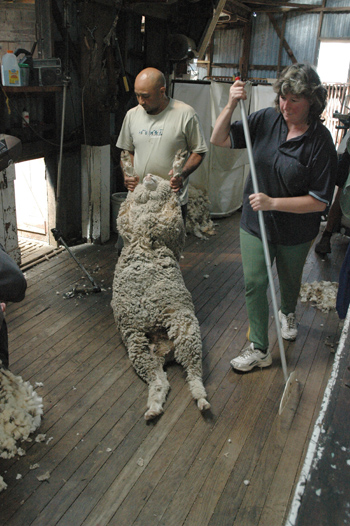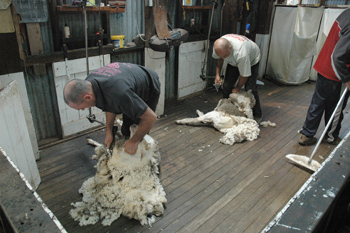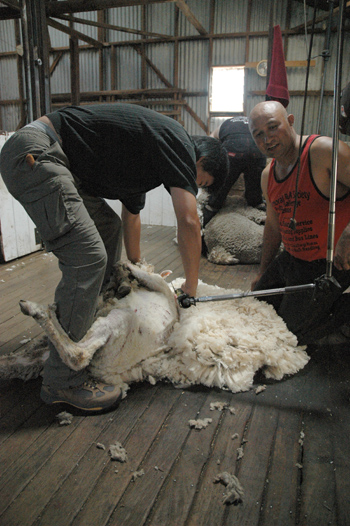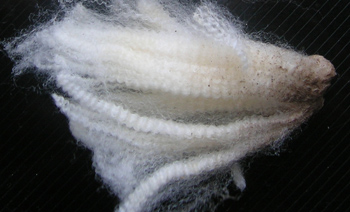Sheep Shearing
3/28/06
Sheep Shearing

We drove through Hamilton, in Victoria, and were informed that it was a wool producing capital. I’ve been wanting to see some sheep shearing ever since we were in New Zealand, but just couldn’t find the time. I stopped in a sheep shearing supply shop and asked how I could see a shearing. The proprietor said that he could see who was shearing in the area, and direct us to their wool shed. A couple of days later, I was given directions to a shearing shed outside of Cavendish, Vic.
We drove to what felt like the middle of nowhere to find the sheep farm. Inside the wool shed, we found a flock of Merino Sheep waiting to be shorn. 
Tom and Trish, a husband and wife team of shearers, have been shearing in Australia for 20 years, but are originally from New Zealand. Tom can be seen here pulling a sheep out of the pen to shear it.
There were two shearing stations in this wool shed, and Graham is working on another sheep in the foreground.
We were surprised at how docile the sheep were during their haircuts, even with the loud noises coming out of the cutters.
My wife and I were even given a chance to try our hand at shearing. Tom gave me the easiest part which was along the back of the sheep, but it still wasn’t easy. The shearer is driven by a drive shaft that is connected over our heads. The flexible joints make the cutter head reach any position around the animal. As the right hand holds the cutter, the left hand is used to hold the sheep in place and move it into position. The left hand does most of the work, as the grip on the cutter is light and relaxed. 
The sheep can sense your touch, so a tense grip will only make the sheep more skittish. Inevitably the sheep gets nicked from the shaver, but I swear that the ones you see on my sheep were not done by me!
After the wool is shorn, it is packed into bales. Parts of the wool near the mouth and belly are separated to sell at a lower price because of dirt and food mixed in with the hair, while the rest of it is compressed into large bales weighing about 190 kilos. Since a price was already set for this wool, these bales just need to be packed and shipped. In other instances when the wool has to be inspected, the wool is laid out flat so buyers can see the quality of the wool.
Trish was very knowledgeable about here trade, and taught us a lot about wool during our visit. We saw how wool from a sheep grows a lot like rings on a tree. Sheep are usually shorn once a year, so if there are any irregularities in the pattern of growth, it can point to specific drought, or cold snap. The darker end on the right side of this picture is the side that makes up the surface of the sheep, while the cleaner, whiter wool is the hair growing closer to the surface. From here, the bales of wool go to a processor that combs and washes the wool so it looks more like the wool thread we’re used to seeing.
These shearers will be hard at work for the next three days each shearing as many as 200 sheep a day. Once they are done, they will move on to the next sheep farm that needs shearing. It’s a competitive business, and the better and faster one can shear, the more work they will get. This becomes even more competitive when many of the local farms are being sold to become tree farms. In an area that now makes more money growing Blue Gum Trees, sheep farming is shrinking.
We’d like to thank Tom, Trish, and the crew for making us feel welcome, and showing us something so fascinating!
Previous Restoration Day
Next Restoration Day
Home page




